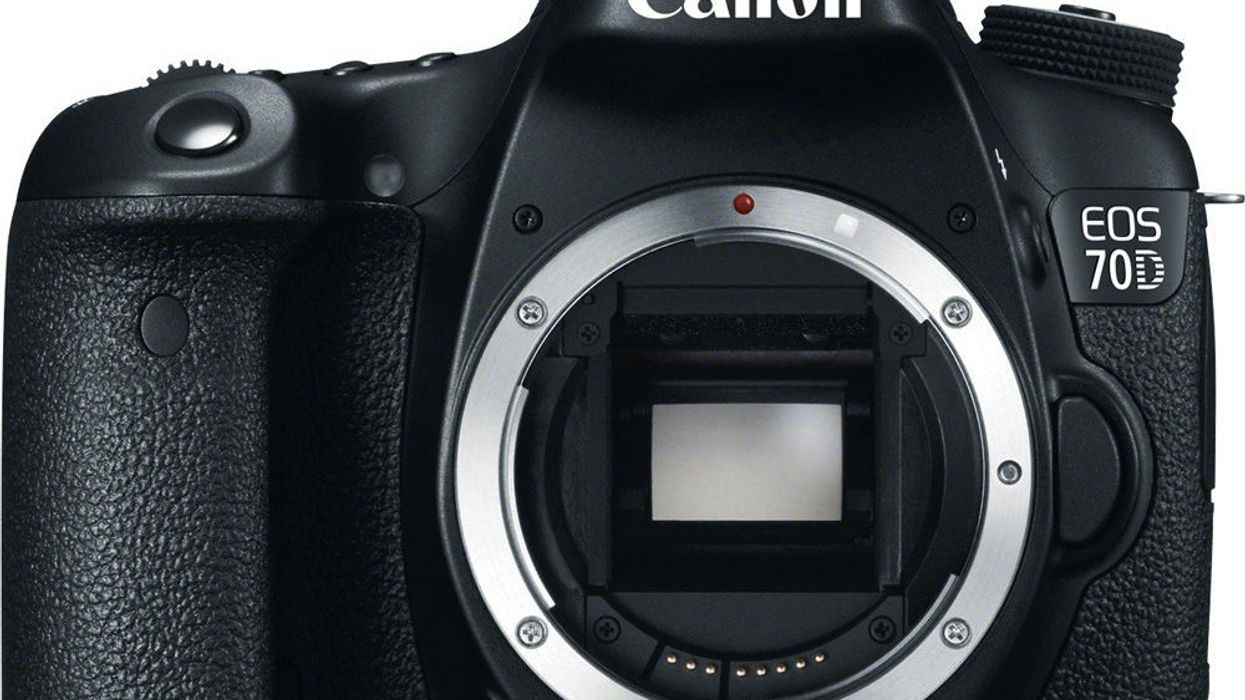New Canon 70D Announced with Improved Video Autofocus Support

There was a pretty solid leak a few days ago showing off the camera and specs, and now we have the official announcement for the Canon 70D, the replacement of Canon's 60D. The new DSLR is sporting a brand new 20MP sensor from Canon -- which is notable because it's the first time in a number of years that they have introduced a new APS-C camera without an 18MP sensor. There is word that this one could set a new benchmark for high-ISO performance, which would be impressive considering the higher pixel count on the same size sensor. Check out more information on the camera below.
Here is the intro video from Canon:
And a rundown of the new camera from Canon Australia:
Here are the official specs for the camera:
- 20.2MP APS-C CMOS Sensor
- DIGIC 5+ Image Processor
- Dual Pixel CMOS AF with Live View
- 3.0" 1,040k-Dot Vari-Angle Touchscreen
- Frame Rates: 1920 x 1080: 30 fps, 25 fps, 24 fps
- @ 1280 x 720: 60 fps, 50 fps
- IPB and ALL-I Compression
- SD, SDHC, SDXC Memory Cards
- Full HD 1080p Video with Move Servo AF
- Built-In Wireless Connectivity
- 19-Point All Cross-Type AF System
- Continuous Shooting Rate Up to 7 fps
- ISO 100-12800 (Expandable to ISO 25600)
- Scene Intelligent Auto Mode
- Body: $1,200
- With 18-55 STM: $1,350
- With 18-135 STM: $1,549
More info on the new Dual Pixel AF:
Dual Pixel CMOS AF is a refined live view focusing technology that works to provide incredibly quick and precise auto focusing abilities that function in a similar manner to how a camcorder acquires focus. This system integrates two separate photodiodes within each pixel to provide a broad and dense network of phase-detection gathering elements to help reduce focus hunting for faster, more direct control of focus placement. Dual Pixel CMOS AF is utilized during live view applications, for either still or video shooting, and enables an enhanced method of working with the vari-angle touchscreen LCD monitor.
When working with still imagery, this focusing system works to acquire focus quickly and accurately, making it ideally suited to shooting and tracking moving subjects and ensuring critical focus is attained with each shot. When shooting video, focusing is smooth and natural when changing from different subjects or different distances within the scene. Benefited by the Touch AF system, rack focus is possible simply by touching elements within the scene on the touchscreen in order to change focus in an intuitive manner. Subject tracking in movies is also heightened due to the Dual Pixel CMOS AF system's ability to recognize subjects and maintain focus when working within changing or cluttered scenery.
This focusing system provides full and intuitive use of the vari-angle touchscreen monitor through its keen integration of touch controls for focusing and articulating design of the screen for viewing from any shooting angle. Additionally, Dual Pixel CMOS AF is fully supported by over 100 current and former EF and EF-S lenses to offer a wide spectrum of compatibility for both still and video applications.
So obviously the bigger changes with this camera from the 60D will be the newer sensor as well as the improved autofocus in video mode (as well as stills mode), and you'll have a couple of lenses that will be able to handle that, like the 18-55mm and the 18-135mm, as well at the 40mm pancake lens. As far as the ISO improvements, we will have to see how much better this model is versus the 60D, but this one has likely been in development for some time.
We'll have more coverage and thoughts, but in the meantime, if you'd like to get a head start, you can pre-order the camera in a number of configurations from the links below.
Links:












